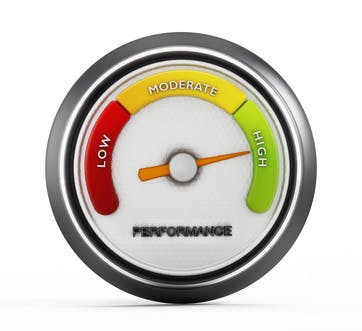We all have the expectation that we will give our best every day all day. But that’s not true.
Leaders have off days, employees struggle with issues and managers let frustrations get the best of them. Unfortunately, the work still has to get done.
How do you manage and build consistency within your company? As a manager, it’s not plausible to expect employees to be “on” all the time but you have to make sure tasks are completed since you are graded on the team’s performance.
Here’s how to do your job and allow for the humanity of your workforce all at the same time.
“A” for effort
Day in and day out, you monitor your team’s productivity. The numbers say they are engaged at work, but what is their performance while they are supposedly “engaged?”
Discretionary effort then becomes more of a measure of performance than engagement. Employee effort given into any particular project at work greatly varies by task because not all duties are created equal. Checking emails, for example, doesn’t take as much thought-provoking energy as the year-end financial reports. Only 70% of employees say they give their “all” at work.
Managers have a direct impact on the effort of their employees. What they say and how they act in regards to employees’ work can enforce good or poor performance. So in order to stimulate higher performance levels from employees and keep them “on” for more hours during the work week, managers have to carefully discern the language and actions to do so.
Pay attention to how you approach individual employees and how they in turn approach their co-workers. At what point are they at their peak performance?
Don’t schedule meetings during that time. When do they seem sluggish and demotivated? Ensure that you give them repetitive tasks that take little creative brainpower.
And encourage employees to track and monitor their own “creative work rhythm.” Aubrey Daniels, international behavioralist, said:
While most managers do not intend to negatively reinforce employees, statements such as these are typically made in an effort to move things along. If you want real change in the form of above-and-beyond performance, you must consider consequences of behavior — and how they are likely to cause the performer to want to do more or just do what is required.”
Do minimums cut it?
Your team will most likely understand the minimum requirements and the consequences of not meeting those minimums (assuming they were effectively onboarded when they were hired).
Too many employees however, 40 percent to be exact, don’t understand how to be successful in the company. Without this basic knowledge of the organization, it is more difficult for employees to push past the minimum.
Now, take into consideration that if they are at least hitting the minimum and they aren’t causing problems in the workplace, they remain part of the team. They may not have the drive or gumption to strive for better performance, but that’s not hindering the organization.
So, they do just enough work to get by. They are not necessarily proud of their work, nor are they pushed to do work to be proud of. While they may not have had that particular attitude when they accepted the job, it was partially developed by those around them through co-workers’ actions and attitudes.
A Sandler Training Survey revealed poor leadership skills could be a proponent of this uninspired workforce. Nearly a quarter of the 1,010 employees surveyed gave their supervisors a C and, more troubling, 14 percent gave a D or an F.
This sneaky toxin can spread throughout the workplace.
You may need to shake things up
If you have managed your team into mediocrity, do something to shake things up. Let go of a poor performer if possible (for cause) or make performance appraisals a genuinely honest affair where you tell your employees what is expected moving forward.
Francis Wade, business columnist, said:
It means that significant effort is being put towards doing the minimum. At this point, staff are doing just enough to keep their jobs, staying one half-step ahead of trouble. It’s probably not the mindset they came to the workplace with, but it’s one that with the encouragement of others, they have developed.”
Create opportunities for your reports to try new projects and work in teams they might not otherwise. Also be honest when evaluating performance and ask them where they might excel if given different responsibilities.
So while you can’t expect that everyone will participate 100 percent daily, you can expect it most of the time. Employees might not get an “A” for effort on every single task, but that’s okay if they perform above par on bigger and more important projects.
In order to promote better performance from your team, recognize what their best efforts are, and help them move in that direction.
